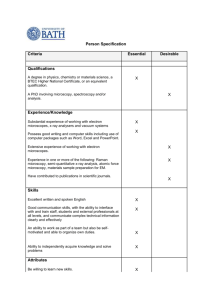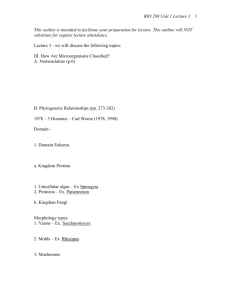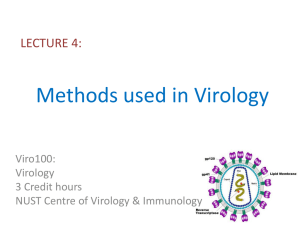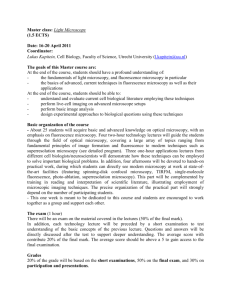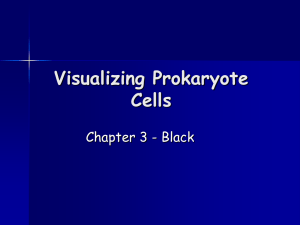TU RCMI Facilities and Resources 2014
advertisement
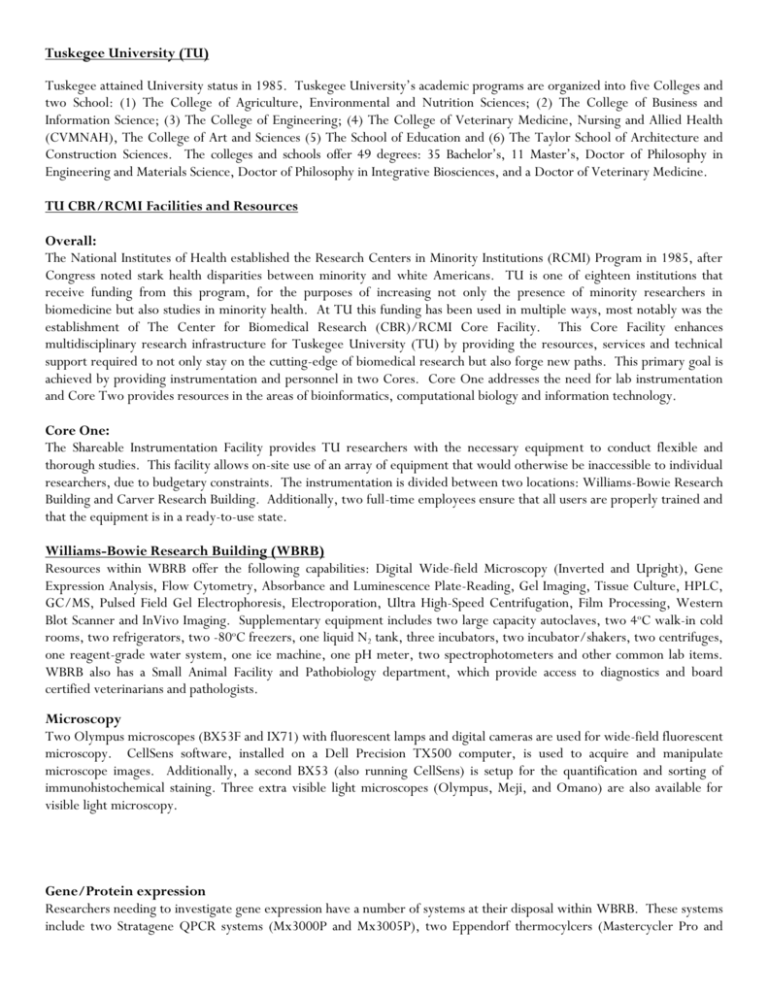
Tuskegee University (TU) Tuskegee attained University status in 1985. Tuskegee University’s academic programs are organized into five Colleges and two School: (1) The College of Agriculture, Environmental and Nutrition Sciences; (2) The College of Business and Information Science; (3) The College of Engineering; (4) The College of Veterinary Medicine, Nursing and Allied Health (CVMNAH), The College of Art and Sciences (5) The School of Education and (6) The Taylor School of Architecture and Construction Sciences. The colleges and schools offer 49 degrees: 35 Bachelor’s, 11 Master’s, Doctor of Philosophy in Engineering and Materials Science, Doctor of Philosophy in Integrative Biosciences, and a Doctor of Veterinary Medicine. TU CBR/RCMI Facilities and Resources Overall: The National Institutes of Health established the Research Centers in Minority Institutions (RCMI) Program in 1985, after Congress noted stark health disparities between minority and white Americans. TU is one of eighteen institutions that receive funding from this program, for the purposes of increasing not only the presence of minority researchers in biomedicine but also studies in minority health. At TU this funding has been used in multiple ways, most notably was the establishment of The Center for Biomedical Research (CBR)/RCMI Core Facility. This Core Facility enhances multidisciplinary research infrastructure for Tuskegee University (TU) by providing the resources, services and technical support required to not only stay on the cutting-edge of biomedical research but also forge new paths. This primary goal is achieved by providing instrumentation and personnel in two Cores. Core One addresses the need for lab instrumentation and Core Two provides resources in the areas of bioinformatics, computational biology and information technology. Core One: The Shareable Instrumentation Facility provides TU researchers with the necessary equipment to conduct flexible and thorough studies. This facility allows on-site use of an array of equipment that would otherwise be inaccessible to individual researchers, due to budgetary constraints. The instrumentation is divided between two locations: Williams-Bowie Research Building and Carver Research Building. Additionally, two full-time employees ensure that all users are properly trained and that the equipment is in a ready-to-use state. Williams-Bowie Research Building (WBRB) Resources within WBRB offer the following capabilities: Digital Wide-field Microscopy (Inverted and Upright), Gene Expression Analysis, Flow Cytometry, Absorbance and Luminescence Plate-Reading, Gel Imaging, Tissue Culture, HPLC, GC/MS, Pulsed Field Gel Electrophoresis, Electroporation, Ultra High-Speed Centrifugation, Film Processing, Western Blot Scanner and InVivo Imaging. Supplementary equipment includes two large capacity autoclaves, two 4oC walk-in cold rooms, two refrigerators, two -80oC freezers, one liquid N2 tank, three incubators, two incubator/shakers, two centrifuges, one reagent-grade water system, one ice machine, one pH meter, two spectrophotometers and other common lab items. WBRB also has a Small Animal Facility and Pathobiology department, which provide access to diagnostics and board certified veterinarians and pathologists. Microscopy Two Olympus microscopes (BX53F and IX71) with fluorescent lamps and digital cameras are used for wide-field fluorescent microscopy. CellSens software, installed on a Dell Precision TX500 computer, is used to acquire and manipulate microscope images. Additionally, a second BX53 (also running CellSens) is setup for the quantification and sorting of immunohistochemical staining. Three extra visible light microscopes (Olympus, Meji, and Omano) are also available for visible light microscopy. Gene/Protein expression Researchers needing to investigate gene expression have a number of systems at their disposal within WBRB. These systems include two Stratagene QPCR systems (Mx3000P and Mx3005P), two Eppendorf thermocylcers (Mastercycler Pro and Mastercycler Gradient), one AlphaImager HP (Innotech), and one CHEF Mapper system (Bio-Rad). The Mx3000P system is connected to a Dell Optiplex 380 PC and the Mx3005P system is connected to a HP Compaq 8000 Elite SFF PC. Both systems use MXPro software. Lastly, a Li-Cor Digiblot scanner is available to image and quantitate western blots. Flow Cytometry A FACSCalibur and an ec800 cytometer are available. Both platforms offer robust analytical capabilities. On the FACSCalibur, FloJo CE is used to manage data acquisition and FlowJo for data analysis. The ec800 system uses proprietary software called ec800 1.3.1. Additionally, the ec800 software allows users to acquire sample data successively without handling samples individually. Plate-reading Two Bio-Tek readers provide absorbance and luminescence plate-reading capabilities. The Powerwave XS is used for absorbance and the Synergy 2 is used for luminescence. Both units are controlled using a Gateway E-4500D computer and Gen5 software. Chromatography A Beckman Coulter HPLC System Gold and Perkin Elmer Autosystem XL Gas Chromatograph/Turbo Mass Mass Spectrotometer with headspace sampler are utilized for chromatography. The HPLC is controlled with an IBM PC 300PL using 32 Karat. The GC/MS is controlled using Turbo Mass on a Dell Optiplex GX110. InVivo Imaging Housed inside the TU Animal Facility, the IVIS Lumina XR (Caliper LifeSciences) provides InVivo imaging capabilities. This system can provide small animal imaging using fluorescence, bioluminescence and/or X-ray. Living Image software on a Dell Precision T3500 computer is used to operate the imager. Tissue Culture A dedicated tissue culture room contains a Nuaire Class 2 biosafety cabinet, two water jacketed incubators and one inverted visible light microscope (Olympus). Electroporation, Film Processing and Ultra High-Speed Centrifugation A Bio-rad Gene Pulser 2 is available for electroporation; film processing can be done using a Konica Monilta processor and a Sorvall RC2-B ultracentrifuge (with multiple rotor options) is on-hand for applications that require ultra high-speed centrifugation. Animal Facility and Pathology Services The College has a modern animal facility capable of accommodating from rodents to large animals and well-organized Comparative Medicine Resource Center (CMRC) for research involving laboratory animals and small ruminants. The facility provides all services to researchers who have projects approved for animal use. The animal facility serves the biomedical research community in the university and is fully equipped with, among others, offices, garment changing areas, animal isolation/quarantine, housing rooms (for both conventional and special accommodations), and rooms for feed storage, cold holding and necropsy. A designated attending veterinarian, a facility manager, a center director and adequate non-technical support personnel are available. Pathology services are provided to the clinical and research community on a fee-for-service basis. Fully equipped and manpowered tissue processing service facility is located in Williams-Bowie building. One board-certified veterinary pathologist and three faculty (with a Doctorate degree in Anatomical Pathology) are available for consultation. Carver Research Building (CRB) Resources within CRB offer the following resources: Digital Wide-field and Confocal Microscopy, Time-Lapse Microscopy, Dark-field Microscopy, Flow Cytometry, Gene Expression Analysis, Absorbance, Fluorescent and Luminescent Plate Reading, Gel Imaging, Tissue Culture, Liquid Nitrogen Storage, Ultra-High Speed Centrifugation and Film Processing. Supplementary equipment includes one large capacity autoclave, one 40C walk-in cold room, two -800C freezers, one 1300C freezer, ten incubators, one incubator/shaker, thirteen centrifuges, one ice machines, a transfection system, a sonicator, distilled/deionized water system, three pH meters three spectrophotometers and other basic lab devices. Microscopy Two Leica microscopes (DM5000B and DMIRE2) with fluorescent lamps and digital cameras are used for wide-field microscopy. The DMIRE2 is an inverted microscope and the DM5000B is an upright microscope. CellSens, installed on a Lenovo Thinkcentre M72e computer, is used to acquire and manipulate microscope images. Additionally, two confocal microscopes are available to users. An Olympus IX81 with a Fluoview FV 1000 accessory provides confocal laser scanning microscopy, using a DDI computer running Fluoview 10 software to acquire and analyze images. A second Olympus IXB1 with an IX2-DSU accessory provides confocal spinning disk microscopy. MetaMorph software run on a Velocity Micro ProMagix computer is used to acquire and analyze images. Additionally, confocal setups allow for dark field and time-lapse microscopy. Five extra visible light microscopes are also available for visible light microscopy. Gene expression Available systems for gene expression include two Applied Biosystems RTPCR systems (StepOne and 7500 Fast), an Eppendorf Mastercyler, one AlphaImager 2000 (Innotech), and a FluorChem E unit(Cell Biosciences). The StepOne system is connected to a Dell Latitude D520with StepOneand the 7500 Fast RTPCR system is connected to a Dell Latitude E6500 using 7500 software. Plate-reading One Bio-Tek and two Molecular Devices (MD) readers provide absorbance, fluorescence and luminescence plate-reading capabilities. The ThermoMax (MD) is used for absorbance, the SpectraMax Gemini EM (MD) is used for fluorescence and the Synergy HT (Bio-Tek) can provide multimodal functionality. The MD systems are controlled using a Lenovo Thinkcentre M72e computer and SoftMax software. A Gateway Pentium 4, with Gen5 software, is used to control the Synergy HT. Flow Cytometry An Accuri C6 flow cytometer is available for counting and examining microscopic particles. A Gateway E-6500 computer using CFlow Plus software controls the system. Tissue Culture A dedicated tissue culture room contains two Nuaire Class 2 biosafety cabinet, four Thermo Scientific water-jacketed CO2incubators and a Labovert microscope. Transfection System and Ultra High-Speed Centrifugation The Lonza 4D-Nucleofector facilitates reproducible cell transfections and a Beckman L7-55 ultracentrifuge (with multiple rotor options) is on-hand for applications that require ultra high-speed centrifugation. Core Two: The Center for Computational Epidemiology, Bioinformatics and Risk Analysis (CCEBRA) and its counterpart, Biomedical Information Management Systems (BIMS), make up the Computational Biology and Bioinformatics (CBB) Core. CBB’s goal is to bolster investigations into health disparities in underserved communities by strengthening the optimal use of computational resources and information technology by RCMI and non-RCMI researchers at TU. Computer IT and Statistical Support Tuskegee University has a strong IT support team. In addition, two units in the CVMNAH supplement the institution-wide IT support. CCEBRA research team is supported by the Biomedical Information Management Systems IT team (BIMS). The expertise of the team members includes: network engineering, tele-media conferencing, database development, and website design which empower researchers for both on-campus and off-campus support. The BIMS team is also responsible for all IT and statistical needs at Tuskegee University’s College of Veterinary Medicine, Nursing and Allied Health (CVMNAH), including the Research Centers at Minority Institutions (RCMI) web page development and management. This includes technical support and training for both hardware and software as well as troubleshooting. Moreover, as the college is in the RCMI network, computing support is also available from other institutions, if necessary.

